
Roots Unraveling Ancient Strands
In the quiet contemplation of a single strand of textured hair, we find ourselves standing at the very threshold of time, gazing into the ancient tapestry of human existence. It is here, within the coiled helix and the resilient fiber, that the echoes of ancestral wisdom truly begin to stir. To understand how social standing wove itself into the very fabric of ancient Egyptian hair styling, particularly for hair of profound texture, we must first allow ourselves to journey back to the elemental biology, the very source from which this heritage flows.
The land of Kemet, as the ancient Egyptians knew it, bore witness to a profound reverence for personal presentation. Hair, more than mere adornment, served as a living canvas, reflecting not only individual artistry but also the intricate social architecture of the civilization. It is a living testament to the human story, etched into the very fibers of being. The diversity of hair types within ancient Egypt, often represented in artistic depictions and confirmed through the painstaking analysis of mummified remains, embraced a spectrum that included wavy, curly, and coily textures.
These natural inclinations formed the fundamental starting point for all styling, regardless of one’s place in the societal hierarchy. Early studies, such as the foundational work by Joann Fletcher, who explored the style, form, and function of ancient Egyptian hair in her 1995 thesis, provide a comprehensive survey of this evidence. (Fletcher, 1995)
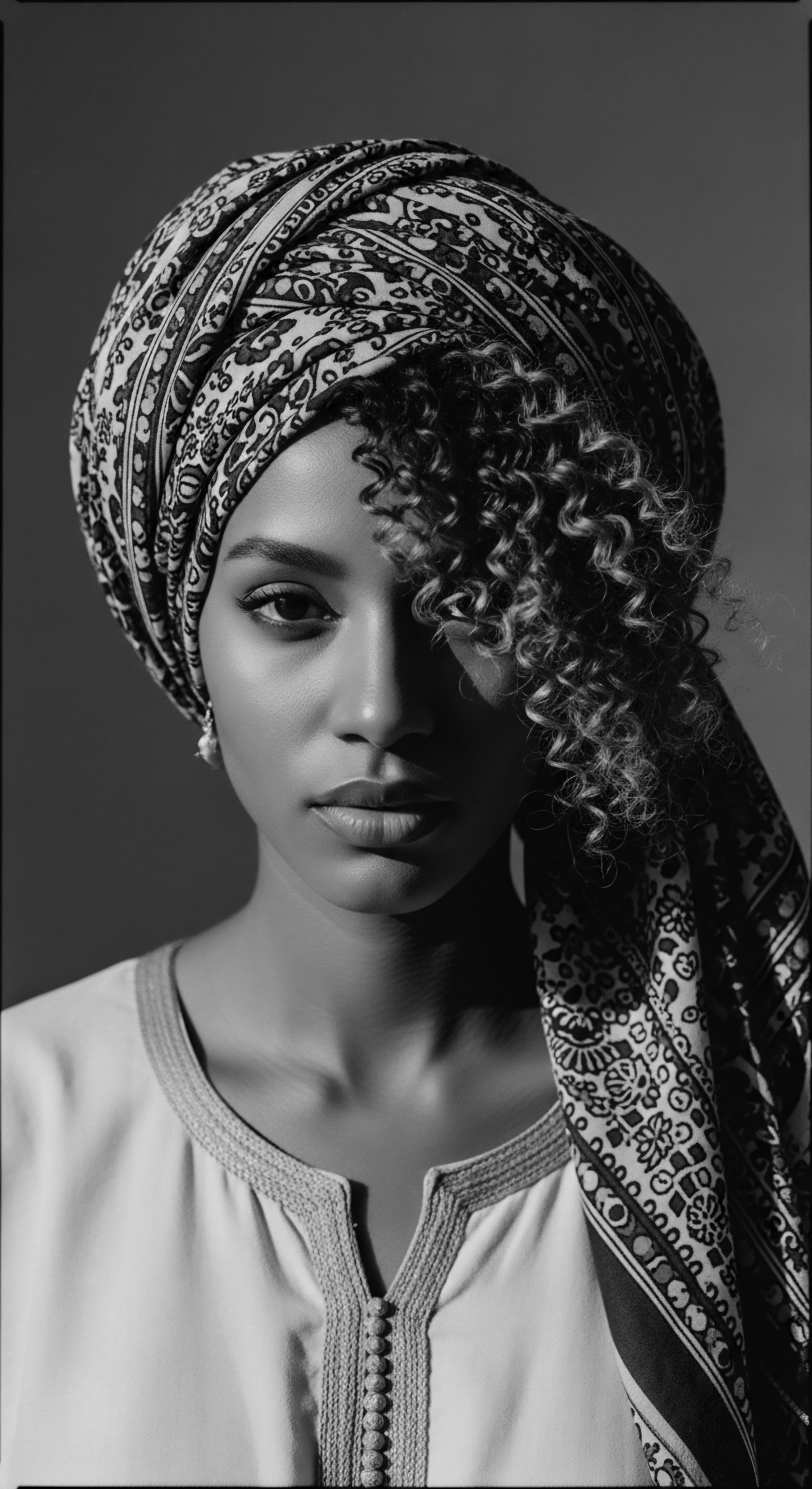
What Was the Natural Texture of Hair in Ancient Kemet?
One might wonder about the inherent structure of the hair that graced the heads of ancient Egyptians. Scientific examinations of hair samples from mummies, including electron probe analysis on Queen Tiye’s hair, have revealed a range of natural hair types. While the arid climate of Egypt often preserved these fibers, their inherent characteristics often mirrored the diverse populations that inhabited the Nile Valley. Archaeological findings frequently point to hair that was naturally dark, with varying degrees of curl and wave.
This ancestral hair, often described as possessing significant density, lent itself beautifully to the elaborate styles seen in funerary art and on preserved wigs. The morphology of these ancient strands speaks to a genetic heritage deeply rooted in the African continent, where textured hair is a common and celebrated aspect of human diversity. This inherent texture influenced how products and techniques were applied, laying a biological groundwork for cultural expression.
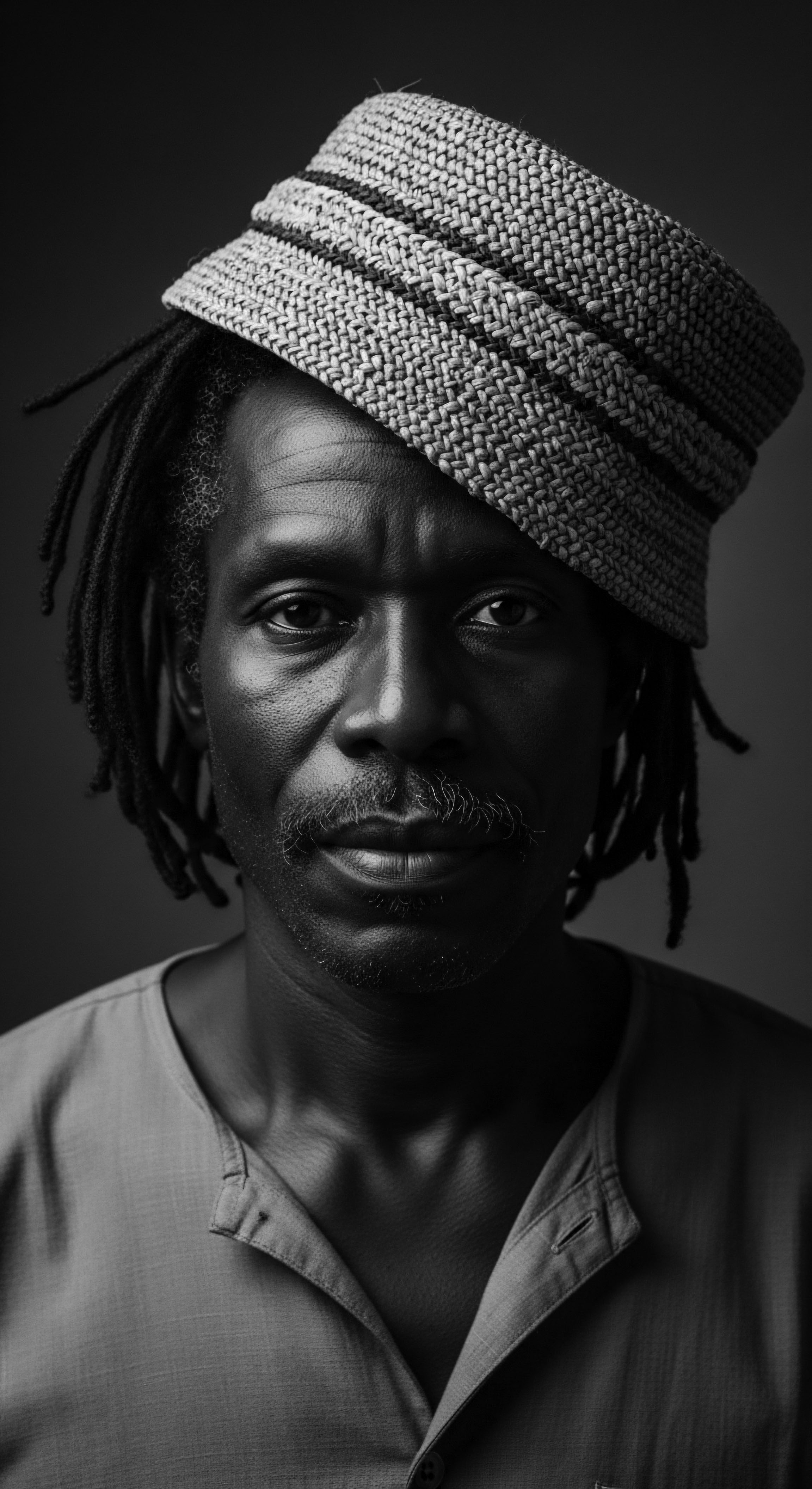
Understanding Hair’s Ancient Structure
The microscopic world of hair, even in antiquity, held its secrets. Each strand, a filamentous protein appendage, originates from a follicle within the scalp. For textured hair, the follicle often possesses an elliptical or flattened shape, which dictates the curl pattern as the hair shaft grows. This contrasts with straighter hair, which typically emerges from more circular follicles.
The unique architecture of textured hair, with its propensity for coiling and bending, naturally affects how moisture is distributed along the shaft, making it more prone to dryness. Ancient Egyptians, through generations of observation and practice, developed an intuitive understanding of these properties, long before modern science could offer explanations. Their solutions, often rooted in natural elements, implicitly addressed these fundamental biological realities, crafting a care system that acknowledged hair’s inherent needs.
- Follicle Shape ❉ The shape of the hair follicle, typically elliptical or flattened for textured hair, dictates the curl pattern.
- Moisture Distribution ❉ The coiling nature of textured strands makes uniform moisture distribution a constant consideration.
- Strength ❉ Despite its appearance, textured hair possesses a unique resilience, adapting to various manipulations.
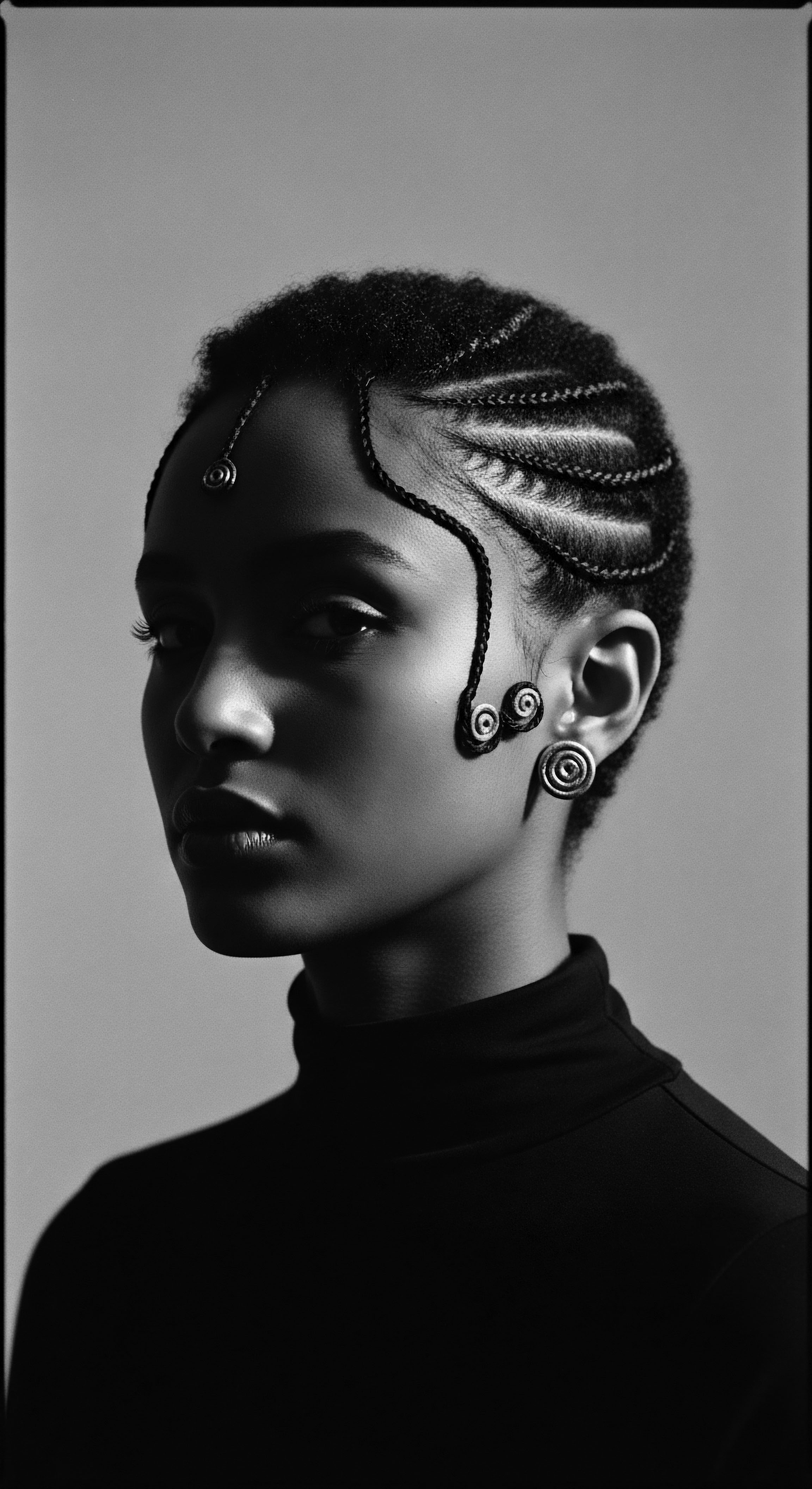
Did Hair Classification Systems Exist in Ancient Times?
While the formal classification systems of hair texture familiar to us today did not exist in ancient Egypt, a distinct visual lexicon emerged that categorized individuals based on their hair’s presentation. This visual language was not merely aesthetic; it was profoundly intertwined with social standing and perceived identity. Hair, whether natural or augmented, became a silent yet powerful indicator of one’s place in the complex societal hierarchy. For instance, the “sidelock of youth,” a single braided or plaited lock on an otherwise shaved head, instantly signaled childhood and often the innocence associated with it.
This style, worn by both boys and girls, was symbolically cut off at puberty, marking a rite of passage into adulthood and its corresponding gendered hairstyles. This transformation was not simply a change in appearance; it was a societal acknowledgment of a new phase of life, a ceremonial severing of ties with childhood hair, signaling a new social role.
| Styling Element Wigs |
| Social Implication Prestige, wealth, and high social status, primarily worn by the elite. |
| Styling Element Natural Hair |
| Social Implication Often seen on non-elites, servants, or in contexts of mourning. |
| Styling Element "Sidelock of Youth" |
| Social Implication Signified childhood and was worn by both young boys and girls. |
| Styling Element Shaved Head |
| Social Implication Associated with priests (for ritual purity) or men of lower status; could also be a base for wigs. |
| Styling Element The appearance of hair, whether natural or styled, spoke volumes about an individual's role and standing within ancient Egyptian society. |
Ancient Egyptian hair styling was a dynamic visual language, speaking volumes about one’s identity and position within the grand societal narrative.

Ritual Crafting Ancestral Silhouettes
The hands that shaped hair in ancient Egypt were not merely performing a task; they were engaged in a ritual, a profound act of creation that connected the individual to the collective heritage and the very cosmos. The styles chosen, the tools employed, and the very transformation of the natural strand into a sculpted form, all bore the weight of social meaning and cultural significance. For textured hair, this ritual was especially intimate, demanding specific techniques and an understanding of its unique characteristics to achieve the desired effect that mirrored one’s social standing.
The elite, the priests, the royalty, and even the common person, each carved out their own space within this intricate system of hair expression. The appearance of hair could signal gender, age, status, and one’s role in society, often carrying religious and even magical undertones. From the earliest dynasties, a canon of hairstyles began to take shape, aligning with the consolidation of administrative power and serving as visual norms for identifying members of the ruling class.

How Did Wigs and Hair Extensions Reflect Social Standing?
Among the most potent symbols of status in ancient Egypt were wigs and hair extensions. These elaborate creations were not simply fashion statements; they were costly commodities, often made from human hair, a valuable item in the Egyptian barter economy. Their ownership and display were largely restricted to the elite, serving as a powerful visual signal of wealth and prestige. The archaeological record frequently yields exquisitely crafted wigs from the tombs of the affluent, often found in special wig-boxes or adorning the mummified remains.
The ingenuity of ancient Egyptian wig makers speaks to a sophisticated understanding of hair manipulation. Wigs were often constructed on a mesh-like foundation, allowing for air circulation, a practical consideration in the hot climate. They also provided a protective layer over shaven or cropped heads, which was a common practice among the nobility, partly for hygiene, reducing the incidence of head lice, and partly as a mark of purity, particularly for priests.
The weight and complexity of a wig could directly correlate with the wearer’s status; some elaborate examples could weigh up to 3 kilograms, made from human hair and plant fibers. (Bebrų Kosmetika, 2024)
Hair extensions, while also used to create desired thickness or hide thinning hair, were more accessible to a broader range of the population than complete wigs. They offered a way to augment natural hair, which was often plaited, twisted, or crimped to achieve specific textures. The blend of human hair with plant fibers, sometimes affixed with beeswax, allowed for a variety of styles that would be instantly recognizable within the social hierarchy.
Wigs and hair extensions were not mere accessories; they were declarations of social standing, crafted with ingenuity and worn with purpose.
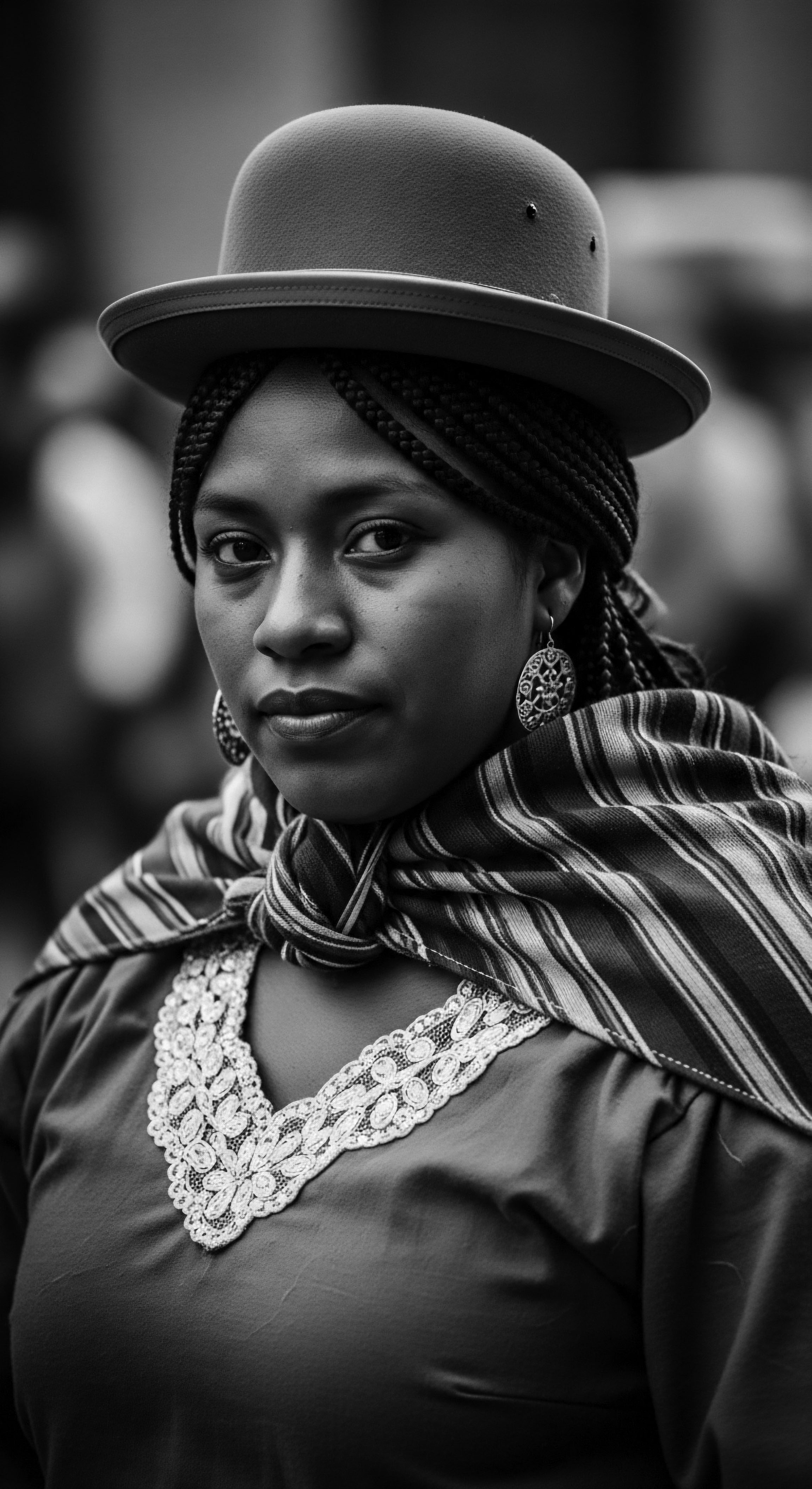
What Styling Techniques Were Utilized for Textured Hair?
For individuals with natural textured hair, ancient Egyptian stylists employed a range of techniques that resonate with ancestral practices still honored today. These methods were tailored to the hair’s inherent curl, ensuring styles were not only aesthetically pleasing but also long-lasting. The pervasive use of braids and plaits, often seen in representations of women and even men, speaks to a deep appreciation for structured, protective styling.
These intricate patterns could vary in size and arrangement, from numerous narrow plaited tresses to thicker, more voluminous designs. For instance, women during the New Kingdom period often wore their hair long, adorned with jewels and flowers, which was achieved through plaits and curls.
Beyond braiding, evidence suggests the use of various substances to condition and hold styles. Fat-based gels, often containing long-chain fatty acids like palmitic acid, have been identified on mummified hair samples, suggesting their use as styling products during life. Natural oils, such as castor oil and almond oil, were used for hydration and strengthening, while henna served as a natural dye, covering grey hair and enhancing natural color, also offering conditioning properties. The blend of these natural ingredients formed the foundation of their hair care regimens, ensuring health and vitality for the hair, even in the harsh desert environment.
The tools of the trade were simple yet effective, echoing ancestral crafts. Bone and wood combs, hairpins made from materials like ivory, bronze, or even silver, and flint or sharp blades for cutting were all part of the ancient Egyptian hairdresser’s toolkit. These implements facilitated the meticulous work of shaping and maintaining the elaborate styles that signified social status. The hairdresser, a profession of intimacy and privilege, played a crucial role in perpetuating these social distinctions.
- Plaits and Braids ❉ Extensive use of intricate braiding and plaiting, creating varied textures and volumes.
- Styling Compounds ❉ Application of fat-based gels and beeswax to hold styles and add luster.
- Natural Oils ❉ Regular use of plant-derived oils (like castor and almond) for conditioning and hair health.
- Henna ❉ Employed for coloring hair and enhancing its natural vibrancy, alongside conditioning benefits.

Relay Understanding Ancestral Connections
The journey through ancient Egyptian hair styling offers more than a glimpse into historical aesthetics; it provides a profound connection to the ongoing legacy of textured hair heritage. The patterns, choices, and underlying motivations of hair expression in antiquity find surprising parallels in contemporary Black and mixed-race experiences, where hair continues to serve as a powerful identifier of culture, resistance, and self-definition. The interplay of social structure and hair presentation in Kemet forms a resonant chord with the communal and personal narratives of hair that persist across generations.
The authority conveyed through hair in ancient Egypt was not simply about individual vanity; it was deeply institutionalized. Hairstyles were inextricably linked to the identity of individuals and social groups, serving as a means of displaying one’s status within the society. (Tassie, 2008) This societal coding of hair holds particular significance for understanding the ancestral practices that continue to shape hair care and styling within Black and mixed-race communities globally, where hair is often a political statement, a cultural anchor, and a spiritual conduit all at once.

How Did Hairstyles Define Roles in Ancient Egyptian Society?
The visual language of hair in ancient Egypt was a sophisticated system of social demarcation, clearly delineating roles based on age, gender, and societal standing. For instance, children, regardless of gender, were almost universally depicted with the distinctive “sidelock of youth.” This style, involving a largely shaven head with a single long, plaited lock on one side, was not just a charming aesthetic; it carried deep symbolic meaning, often associated with protection and the deity Horus. Upon reaching puberty, this lock was ceremoniously cut, signifying the transition from childhood to adulthood and the adoption of gender-specific hairstyles. This act, a clear rite of passage, underscores how deeply ingrained hair practices were in marking life’s various stages.
For men, particularly those of high social rank, hair was often kept short or shaved. Yet, this simplicity was frequently a foundation for elaborate wigs, which served as prominent signals of prestige. The more distinguished the male official, the more elaborate their wigs would be, often arranged in intricate curls or braids. A fascinating insight into the elite’s use of hair is found in art historian Gay Robins’ analysis of Egyptian tomb chapels from around 1480 to 1350 BCE.
Robins observes that elite men’s ability to wear wigs made from the hair of others signified their power to “command” others for their own purposes. This practice reveals a profound aspect of social control and hierarchy embedded within hair practices.
Women across all social strata tended to retain longer hair, though elite women, like their male counterparts, also wore wigs for formal occasions. The “tripartite style,” characterized by tresses framing the face and a third section down the back, could signify a particular stage in a young woman’s life, marking her as no longer a child but not yet married. The very ability of elite women to change their hairstyles or wigs implied not only leisure time for grooming but also the financial means to employ skilled hairdressers.

What Was the Connection Between Hair and Purity?
Beyond social hierarchy, hair carried significant religious and ritualistic meaning in ancient Egypt, particularly concerning concepts of purity. Priests, in their devotion to the gods, would typically shave all hair from their bodies, including their heads. This practice was believed to cleanse the body and soul, safeguarding against impurities and preparing them for sacred duties within temple environments. This dedication to cleanliness, while practical in reducing lice infestations, also held a profound spiritual dimension, reflecting a commitment to a life of ritual purity.
The very absence of hair, therefore, could be a symbol of deep reverence and connection to the divine. This contrasts with the symbolism of hair in other contexts, such as mourning. In times of grief, hair could symbolize chaos and disorder.
Mourning women would sometimes cover their faces with their hair or even cut off a lock, a gesture echoing the myth of Isis cutting her hair in sorrow for Osiris. This interplay of hair’s presence and absence, its styling and its raw state, truly captures the layered symbolic significance it held for the ancient Egyptians.
| Group or Context Elite Men and Women |
| Hair Presentation Elaborate Wigs, often over shaven/short hair |
| Underlying Significance Wealth, social status, power to command, protection from sun, hygiene |
| Group or Context Priests |
| Hair Presentation Shaven heads and bodies |
| Underlying Significance Ritual purity, devotion, freedom from impurities |
| Group or Context Children |
| Hair Presentation "Sidelock of Youth" (single braided lock on shaved head) |
| Underlying Significance Childhood, innocence, protection, connection to Horus |
| Group or Context Mourners |
| Hair Presentation Hair disheveled, covering face, or cut locks |
| Underlying Significance Symbol of chaos, grief, connection to the deceased, echoes of Isis's sorrow |
| Group or Context Hair in ancient Egypt was a complex symbol, articulating both earthly hierarchy and spiritual devotion. |

Reflection The Unbound Helix of Heritage
The intricate journey through ancient Egyptian hair styling, particularly when viewed through the lens of textured hair heritage, serves as a powerful testament to the enduring human connection to our strands. It reveals that the desire to adorn, protect, and communicate through hair is not a fleeting modern phenomenon but a deeply rooted ancestral practice, a living archive of self and community. The whispers of ancient Egyptian barbers and wigmakers, the rustle of meticulously plaited strands, and the glint of gold woven into elaborate coiffures all echo in the contemporary salons and kitchens where textured hair is celebrated and cared for today.
The “Soul of a Strand” ethos finds profound resonance in this historical exploration. Each ancient style, each preserved wig, each hieroglyph depicting a coiffure, tells a story of identity, status, and resilience. For Black and mixed-race communities, these echoes from Kemet are particularly poignant. The ingenuity employed to maintain, style, and protect textured hair in a challenging climate, using natural oils, balms, and intricate braiding techniques, mirrors ancestral practices that have been passed down through generations.
These are not merely historical facts; they are living traditions, a continuous thread of heritage stretching across millennia. The ancient Egyptians, through their meticulous attention to hair, laid down a foundational understanding of hair’s power—its ability to communicate, to protect, and to signify one’s place within the world. Their legacy reminds us that our hair, in all its varied and magnificent textures, is a sacred part of ourselves, a link to the wisdom of those who came before us, and a beacon for the generations yet to come.
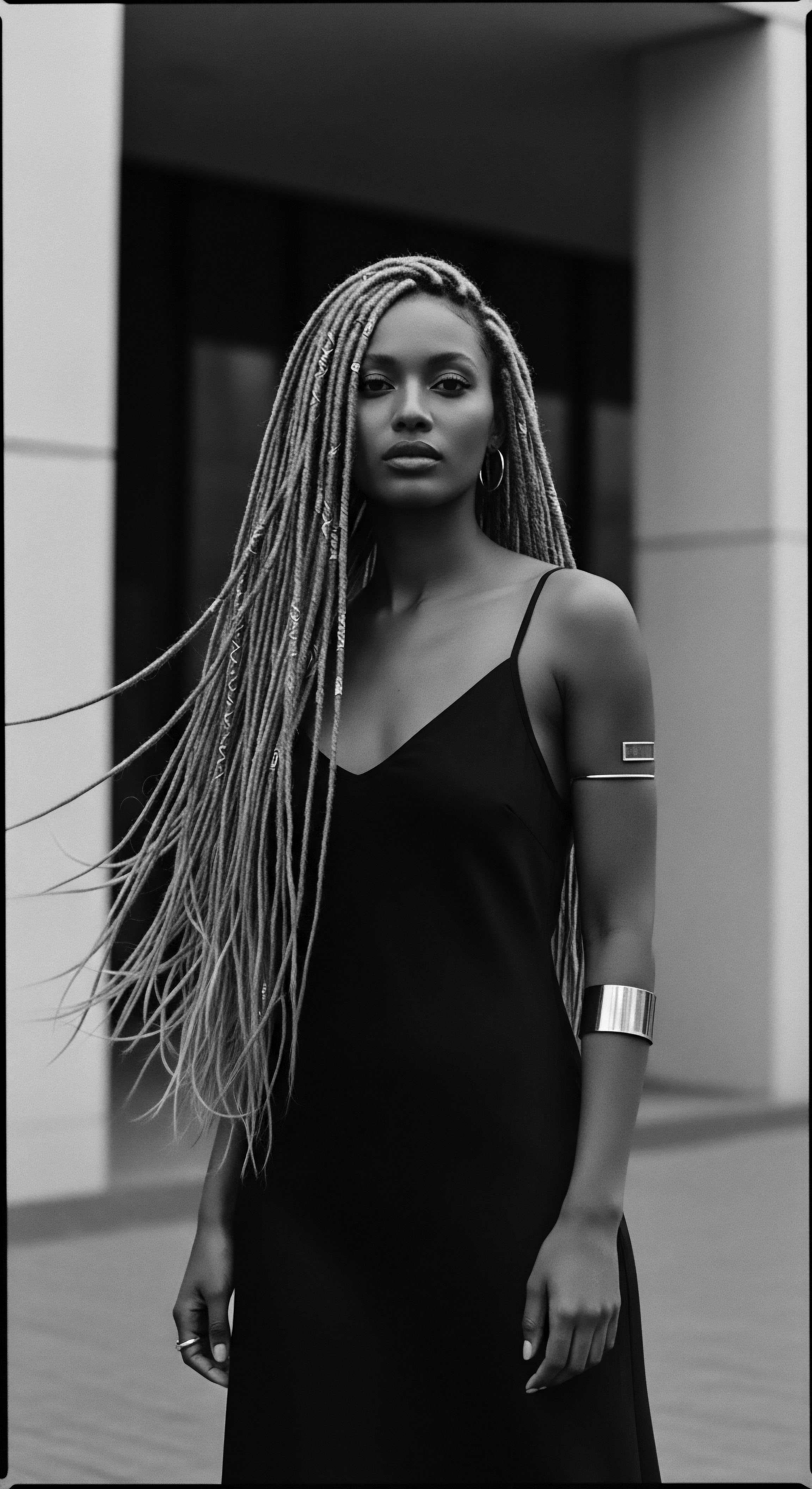
References
- Fletcher, J. (1995) Ancient Egyptian Hair ❉ a study in style, form and function. Unpublished PhD thesis, University of Manchester.
- Tassie, G. J. (2008) The Social and Ritual Contextualisation of Ancient Egyptian Hair and Hairstyles from the Protodynastic to the End of the Old Kingdom. PhD thesis, University College London.
